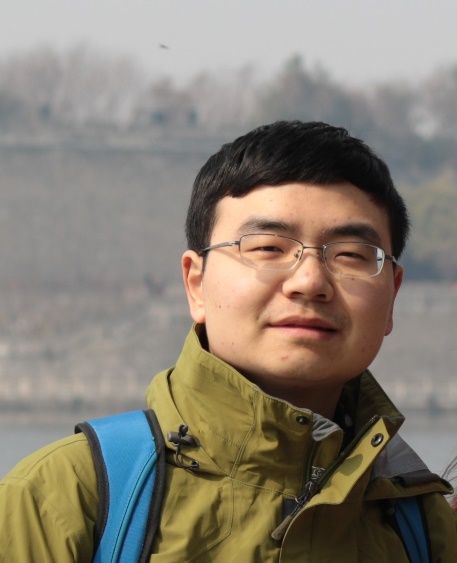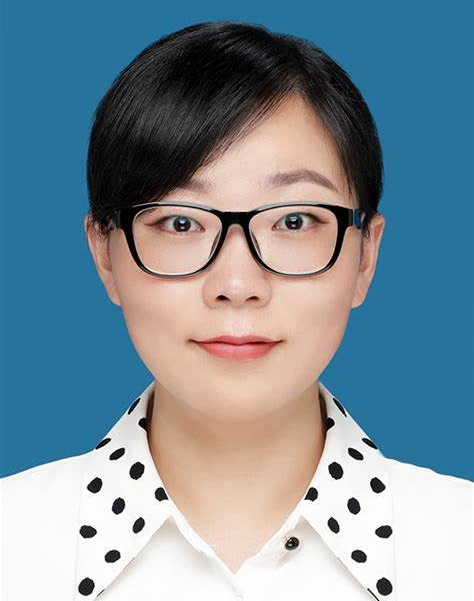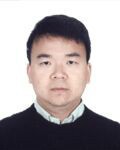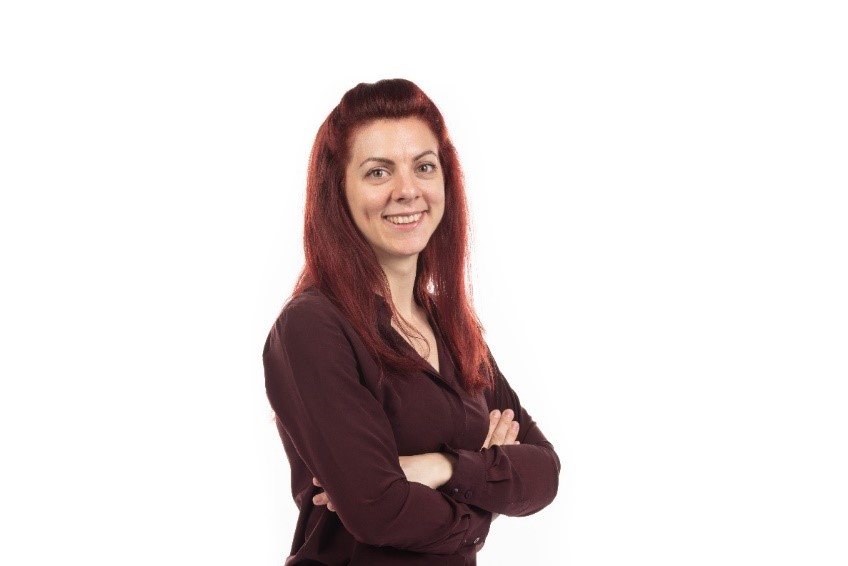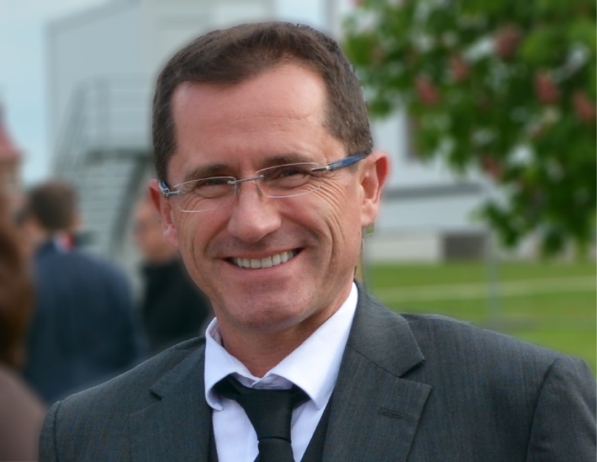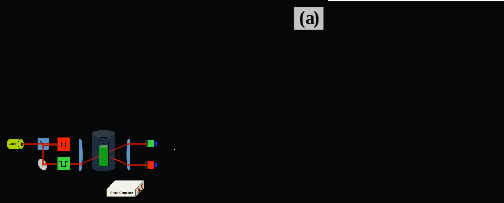光散射按照散射前后能量变化与否可分为非弹性光散射和弹性光散射。瑞利散射(静态光散射)的谱范围非常窄,散射前后能量变化微乎其微,因而属于弹性光散射。动态光散射则是与多普勒频移有关的准弹性光散射。布里渊散射、拉曼散射属于光的非弹性散射,它们在散射前后的能量发生了明显的变化。
光散射中应用最为广泛的瑞利散射(静态光散射)和动态光散射常常被用来研究溶液、溶胶体系,以表征其粒子尺寸、浓度、重均分子量、均方回转半径、第二维里系数、大分子和胶体粒子的流体力学半径,弛豫时间等。其中粒子尺寸和分子量的表征是光散射技术最为成熟的应用;然而不应忽视的是,光散射技术在软物质动力学研究中同样具有重要的应用。不论是凝胶体系,还是溶液体系,动态光散射技术都可以很好的表征其动力学过程的特征弛豫时间以及其角度依赖性,为科研人员研究软物质动力学提供了强有力的技术支持。近年来,随着仪器技术的发展,诸如扩散波谱仪(DWS),三维光散射等针对浑浊体系,半浓体系的技术逐渐成熟,大大拓宽了可供光散射技术研究的体系范围。
本次研讨会由华南理工大学发光材料与器件国家重点实验室举办。发光材料与器件对于溶液加工场景依赖性较大。发光材料溶液态结构和动力学行为的解析对开发高效和定构化的功能材料和器件加工工艺具备实际指导意义。但光散射数据的解读一直具有较大的难度,这也是限制其在动力学研究中应用的主要原因,基于此,我们举办本场光散射技术培训会,邀请了多位业内专家带来他们多年的研究工作和国际发展动向,为大家系统地展示光散射原理、实验技术及其应用。
本次为线上会议,敬请与会师生在进入腾讯会议室后标注单位及实名以方便提问及讨论。
会议日程:
本次会议为网上在线会议,时间为2022年9月23日(星期五),地点腾讯会议478-258-237。
报告时间 | 报告题目 | 主讲人 |
09:00—10:30 | 动态光散射的基本原理与数据解析 | 李牧 助理研究员 |
10:30—12:00 | 带电大分子在受限环境下的非扩散型拓扑动力学 | 贾迪 研究员 |
14:30—16:00 | Applications of Diffusing-wave Spectroscopy in Food | 潘伟春 教授 |
16:00—17:30 | Advanced Light Scattering Techniques and their Applications | Dr. Coline Bretz |
19:30—21:00 | Characterization of Soft Materials by 3D Cross Correlation Light Scattering and Diffusing Wave Spectroscopy | Prof. Dr. Frank Scheffold |
报告人及报告内容简介:
①动态光散射的基本原理与数据解析 | |
主 讲 人:李牧 助理研究员 深圳综合粒子设施研究院 深圳市光明区新湖街道圳园路268号 Email: limu@mail.iasf.ac.cn |
|
简介: 动态光散射是一种利用溶液中粒子布朗运动对光的准弹性散射来对粒子进行表征的方法。动态光散射可以对溶液中的粒子进行原位测试,可获得有关扩散系数、粒径以及粒径分布等丰富信息,在化学、生物、材料等领域应用广泛。然而动态光散射原理较为复杂,并且由于病态问题的特性,其数据解析具有一定的主观性与不确定性。因此,本报告将从基础的动态光散射理论出发,对动态光散射的原理与常用数据解析方法进行介绍。并介绍新发展的基于机器学习框架的多角度动态光散射数据联合分析方法。 | |
李牧,2022年博士毕业于华南理工大学,获理学博士学位,现在深圳综合粒子设施研究院参与同步辐射光源的相关工作。他的主要研究方向为小角散射与动态光散射理论、方法学与软件开发,及其在物质表征中的应用。已发表SCI论文6篇,并开发了小角散射与动态光散射数据分析软件,获得软件著作权一项。 | |
②带电大分子在受限环境下的非扩散型拓扑动力学 | |
主 讲 人:贾迪 研究员 中科院化学研究所 高分子物理与化学国家重点实验室 |
|
简介: 过去70多年以来人们认为高分子链在受限环境下总是可以自由扩散运动的,并且遵从爱因斯坦扩散方程。高分子链在不同的受限环境下有不同的运动模型。即使是在最强烈的受限环境下,高分子链的运动符合由P. G. de Gennes和S. F. Edwards提出的著名的管道模型 (reptation),在此模型中,高分子链仍然可以像蛇一样向前爬行,符合一维无规自由扩散运动(one-dimensional random walk),因此,无论是在弱受限环境还是强受限环境中,高分子链都是可以自由运动的,并且遵从爱因斯坦扩散方程。 本报告将介绍一种新型动力学,即“非扩散型拓扑动力学(Non-diffusive Topologically Frustrated Dynamics)”。在此受限环境中高分子整链是不能自由扩散运动的,但是一条链内的局部链段可以在每个凝胶网格内做多级局部松弛运动,其本质是多熵位垒造成的一种能长存的亚稳态。本报告会详细阐明为什么在更强的受限环境下(reptation管道模型)高分子链能够进行一维自由扩散运动,而在较弱的拓扑受限环境下,高分子链反而不能进行自由扩散运动,并深入对比了我们这一新发现与著名的管道模型的区别。利用这一新型动力学可以在室温下把DNA链“困”在高含水量的水凝胶中,且DNA等生物大分子仍可保持其生物功能性。因此,这一新型动力学对基因工程,药物释放等领域具有重大价值。 | |
贾迪研究员2021年加入中科院化学所。2021年获得“国家海外优秀青年科学基金”资助、“中科院百人计划”资助。2019 年荣获 Journal of Chemical Physics期刊“年度最佳审稿人”称号。具有散射技术与高分子物理的专业特长,主要研究方向为多尺度自组装带电软物质----从基础研究到创新应用。具体包括带电高分子与带电软物质体系的动力学、结构、相行为、反应动力学等,并将基础研究上取得的成果应用到生物医疗工程、能源、环境等领域中,力争以基础研究创新带动应用创新。 | |
④Advanced Light Scattering Techniques and their Applications | |
主 讲 人:Dr. Coline Bretz LS Instruments, Fribourg, Switzerland |
|
简介: Light scattering is a powerful characterization technique routinely used in research and formulation development in diverse area such as life sciences, food, personal care products or advanced materials. Depending on the specific technique employed, it provides a measure of the size (DLS) or shape (SLS) or determines the viscoelasticity of a sample (DWS) [1]. While these are well-established characterization techniques, several significant improvements have gained traction over the past decade. This presentation will feature a short review of novel techniques enabling a wider range of applications, such as Depolarized DLS [2], Non-Ergodic DLS [3], Modulated 3D DLS [4] or Echo-DWS [5]. | |
REFERENCES [1] Weitz & Pine, Diffusing-Wave Spectroscopy. In Dynamic Light Scattering; Brown, W., Ed.; Oxford University Press: New York, 652-720 (1993). [2] Balog & al., Characterizing nanoparticles in complex biological media and physiological fluids with depolarized dynamic light scattering, Nanoscale, 2015, 7, 5991-5997 [3] Pusey & van Megen, Dynamic light scattering by non-ergodic media, Physica A: Statistical Mechanics and its Applications 1989, 157, 2, 705-741 [4] Block & Scheffold, Modulated 3D cross-correlation light scattering: Improving turbid sample characterization, Rev. Sci. Instrum. 81, 123107 (2010). [5] Zakharov & al., Multispeckle diffusing-wave spectroscopy with a single-mode detection scheme, Phys. Rev. E 73, 011413, 2006 | |
Dr. Coline Bretz is an expert in advanced light scattering technologies. She studied colloidal science at the Paris 7 University (France) as well as the University of Pennsylvania (USA) and holds a PhD in physical chemistry. She joined LS Instruments as a product scientist in 2017 and now leads the Sales & Marketing business unit. She was the winner of the 2019 MDPI-Polymers Prize awarded by ECIS, the European Colloid and Interface Society. (The prize was created by ECIS and the MDPI journal Polymers for young scientist to acknowledge top level scientific activity of young researchers in the field of polymer physics, chemistry, or technology.) | |
⑤Characterization of Soft Materials by 3D Cross Correlation Light Scattering and Diffusing Wave Spectroscopy | |
主 讲 人:Prof. Dr. Frank Scheffold Physics Department and Fribourg Center for Nanomaterials, University of Fribourg, Chemin du Musée 3, CH-1700 Fribourg, Switzerland Board of LS Instruments AG, CH-1700 Fribourg, Switzerland Email: Frank.Scheffold@unifr.ch web: https://www.unifr.ch/phys/en/research/groups/scheffold/ |
|
简介: I Figure 1. 3D Light Scattering – 3D LS. (a) Original 3D-Cross Light Scattering Goniometer [2]. Inset: Principle of time gating the beam-detector pair using a Pair of acousto-optical modulators (AOM) (b) employed as MHz-frequency shutters when inserted into the beam bath (Pictures courtesy of LS Instruments AG, Fribourg, Switzerland). | |
REFERENCES [1]Neutron, X-rays and Light. “Scattering Methods Applied to Soft Condensed Matter” (North-Holland, 2002), Th. Zemb & P. Lindner (Editors) [2] F. Scheffold and R. Cerbino, “New trends in light scattering”, Current Opinion in Colloid & Interface Science 12 (1), 50-57 (2007) [3] Block, I. and Scheffold, F., “Modulated 3D cross-correlation light scattering: Improving turbid sample characterization”, Review of Scientific Instruments 81, 123107 (2010) [4] Kim H.S., Şenbil N., Zhang C., Scheffold F., Mason T.G. “Diffusing wave microrheology of highly scattering concentrated monodisperse emulsions”, PNAS 116(16), 7766-71 (2019) [5] Reufer, M., Diaz-Leyva, P., Lynch, I., & Scheffold, F. “Temperature-sensitive poly (N-Isopropyl-Acrylamide) microgel particles: A light scattering study,” EP E, 28(2), 165-171. (2009) [6] Rojas-Ochoa, L. F., Castaneda-Priego, R., Lobaskin, V., Stradner, A., Scheffold, F., & Schurtenberger, P., “Density dependent interactions and structure of charged colloidal dispersions in the weak screening regime,” Physical Review Letters 100 (17), 178304 (2008) [7] Xu, Y., Scheffold, F. and Mason, T.G., Diffusing wave microrheology of strongly attractive dense emulsions. Physical Review E, 102(6), p.062610. (2020) [8] Garting, Tommy, and Anna Stradner. "Optical microrheology of protein solutions using tailored nanoparticles,” Small 14 (46), 1801548 (2018) [9]Matsumoto, A., Zhang, C., Scheffold, F., and Shen, A.Q. Microrheological Approach for Probing the Entanglement Properties of Polyelectrolyte Solutions. ACS Macro Letters, 11(1), pp.84-90 (2021) | |
Frank Scheffold, born in 1969, holds a chair in experimental physics at the University of Fribourg (Switzerland). He studied at the University of Konstanz (Germany) and the Weizmann Institute of Science (Israel, with Prof. Jacob Klein). He received his Ph.D. from the University of Konstanz in 1998 for research he had carried out at the Institut Charles Sadron (Strasbourg, France) and in Konstanz with Prof. Georg Maret. After his habilitation at the University of Fribourg in the group of Prof. Peter Schurtenberger, he was appointed associate professor in 2004. Since 2009 he has held the chair of "Soft Matter and Photonics." Since 1996 he has authored about 120 peer-reviewed scientific articles. He was a visiting scholar for several months at UC Los Angeles (2009), the University of Queensland (2014), and New York University (2019). His research interests include the optics of complex systems, static and dynamic light scattering, diffuse light propagation, the dynamics of colloidal systems, aggregation and phase behavior, and the fabrication and characterization of soft materials. From 2011-2019 he served as a member of the Swiss National Research Council. He is co-founder and currently chairman of LS Instruments AG, Fribourg. He was a founding member of the Swiss National Centre of Competence in Research "Bioinspired Materials" based in Fribourg and was a member of the Centre's Executive Board from 2014 to 2022. | |

